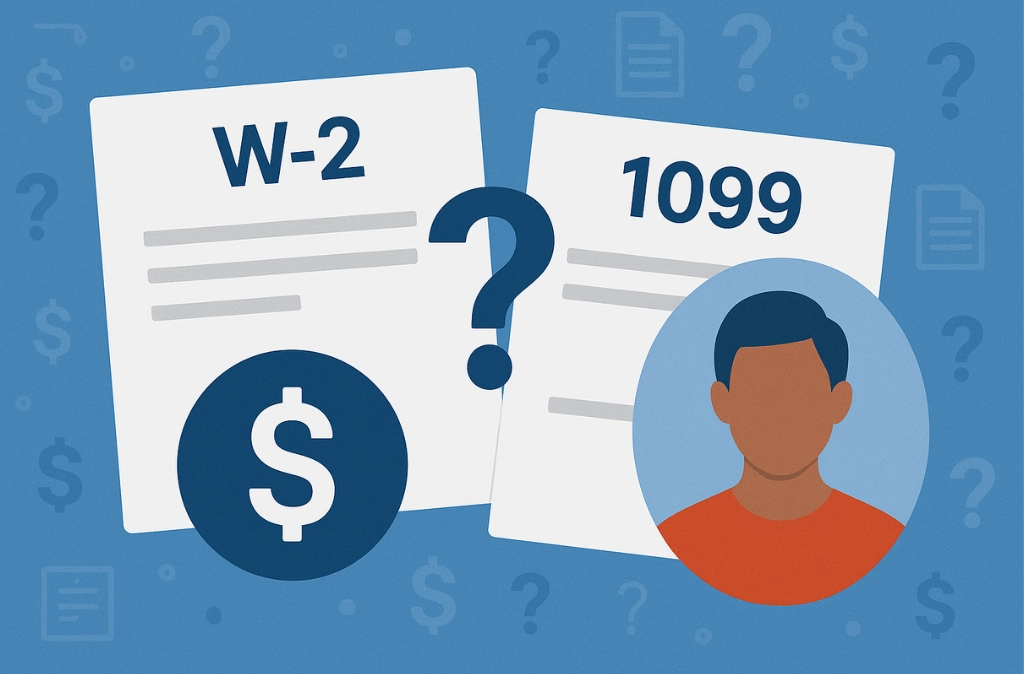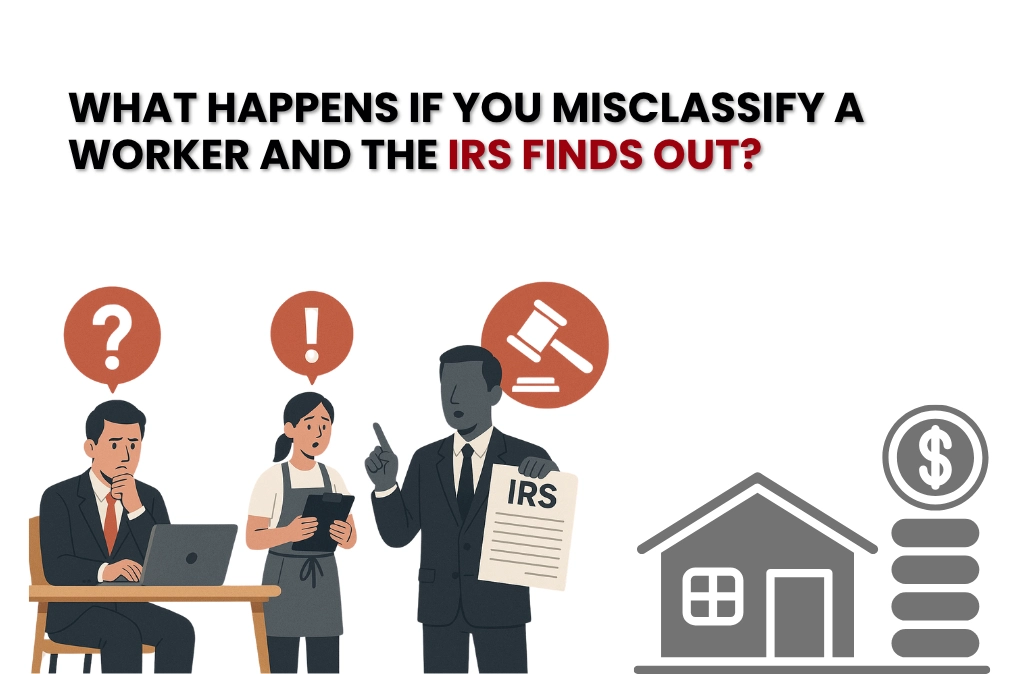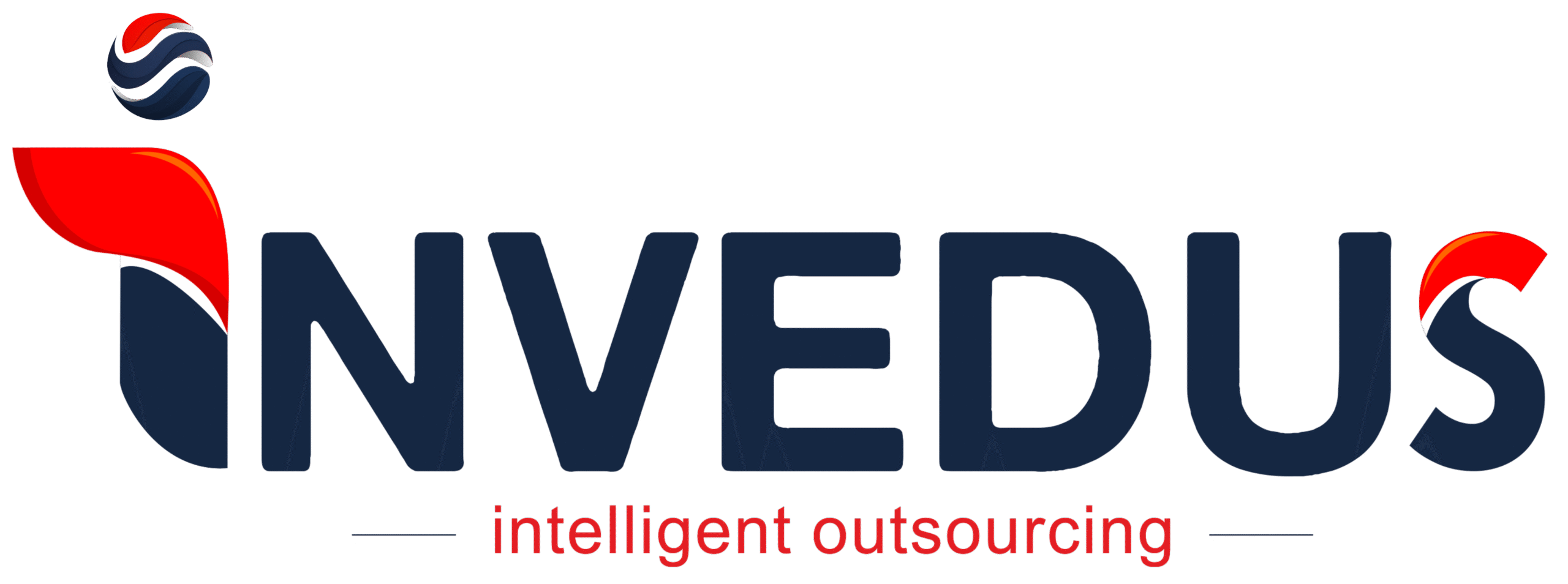
1099 or W-2? Or Something Better? How to Make the Right Hiring Choice in 2025
Hiring decisions carry more weight than most realize.
A good hire moves the business forward. A misclassified one leads to fines, legal headaches, and damage that goes beyond the bottom line.
The 1099 vs W2 worker difference directly affects how your team operates, how risks are managed, and how scalable your business becomes.
The IRS, Department of Labor, and many state governments are now aggressively enforcing misclassification laws. Businesses that thought they were saving money with flexible hires are instead facing lawsuits, back taxes, and even criminal charges.
Thus, if you’re weighing W2 vs 1099 for your next hire, know this: it’s no longer a simple choice between employee and contractor.
In this guide, we will walk you through both options with 100% clarity & practicality and 0 jargon.
And as a bonus, we’ll introduce a third alternative where you don’t have to stress about classifications at all. More on that later.
Let’s begin!
Core Insights
- Classifying someone as W-2 or 1099 is not a personal choice. It must follow IRS, DOL, and state-level legal criteria.
- The difference between W-2 and 1099 is not just about taxes. It affects culture, workflow, control, and long-term costs.
- Misclassification is common and costly. Even accidental errors can lead to audits, back taxes, and legal trouble.
- Choose W-2 when you need long-term support, direct oversight, and integration into your team.
- Choose 1099 when you need quick, independent help with minimal supervision or short-term needs.
- Consider outsourcing if you want full-time support without compliance burden or legal risk. It gives you control without the admin work.
- If you’re unsure which route fits best, evaluate how much control, continuity, and risk you are prepared to manage. Choose based on strategy, not assumption.
W-2 vs 1099 Employee: A Clear, Non-Boring Comparison
Let’s start with the essentials.
The difference between a W-2 vs 1099 employee is about how work is done, who controls it, and how taxes are handled.
A W-2 employee is someone you hire as part of your team. You manage their schedule, provide tools or training, and withhold taxes from their paycheck. They may be full-time or part-time, but they’re typically entitled to benefits, labor protections, and long-term integration into your company.
A 1099 contractor, on the other hand, runs their own business. They control when, how, and where they work. You pay them for results, not effort and they handle their own taxes, expenses, and liability. Think of them more as a vendor than a team member.
Still unsure whether you need a W2 or 1099 employee? Here’s a side-by-side comparison:
| Feature | W-2 Employee | 1099 Contractor |
|---|---|---|
| Control Over Work | The employer dictates how and when work is done. | The contractor decides how and when to deliver. |
| Tax Responsibility | Employer withholds and files taxes. | Contractors handle their own taxes. |
| Benefits Eligibility | Eligible for benefits like health insurance. | Not eligible for employer-sponsored benefits. |
| Work Arrangement | Ongoing role, often with set hours. | Project-based or temporary assignments. |
| Legal Coverage | Covered by labor laws and protections. | Minimal protections. |
Whether you need a 1099 or W2 employee often depends on how much control and continuity your business needs and how much compliance risk you’re willing to manage.
We’ll look more into that in the next section.
How to Legally Classify a W-2 vs 1099 Worker in 2025: IRS, DOL, and State Tests Explained!
The distinction between a W-2 vs 1099 employee classification is determined by law and not an employer’s preference.
In 2025, the IRS, Department of Labor (DOL), and individual states are enforcing strict criteria to stop businesses from misclassifying workers. Here’s how each body defines the difference.
IRS: The Three Common Law Factors
The IRS evaluates workers using three main categories:
- Behavioral Control: Does the company dictate how, when, or where the work is done? If yes, the worker is likely a W-2 employee.
- Financial Control: Does the business control the worker’s expenses, tools, and whether they can realize a profit or loss?
- Type of Relationship: Is there a written contract, benefits, or an expectation of permanent work?
DOL: The Economic Reality Test
The Department of Labor focuses on whether the worker is economically dependent on the business or operates independently. This test is primarily used for wage and hour protections under the Fair Labor Standards Act.
Their test includes:
- Whether the service is integral to the business
- The worker’s opportunity for profit or loss
- The degree of control exercised
- How permanent the working relationship is
- Who provides tools and resources
- The level of skill and initiative required
EEOC: Employment Relationship Presumption
The Equal Employment Opportunity Commission uses similar criteria but operates under a presumption: unless proven otherwise, a worker is an employee. Additional red flags that suggest an employee relationship include:
- Setting the worker’s schedule and hours
- Use of tools, equipment, or software provided by the business
- Assignment of multiple, ongoing projects by the employer
- Performing work regularly at the company’s location
- Lack of external marketing or service offerings to other clients
State-Level ABC Test (Stricter in 2025)
Many states, including California, Massachusetts, and New Jersey, apply the ABC test, which makes it harder to classify someone as an independent contractor. To pass, all three of the following must be true:
A. The worker is free from the company’s control.
B. Their work is outside the company’s core business.
C. The worker has an established independent business.
If any one of these conditions isn’t met, the person must be treated as a W2 employee under state law.
In 2024 and 2025, more states are moving toward the ABC model, especially for roles in logistics, tech, and creative services.
What the IRS and DOL Are Targeting in 2025?
Both agencies are now auditing businesses that:
- Classify full-time, supervised roles as 1099
- Repeatedly issue 1099s to long-term or essential staff
- Fail to issue proper tax forms (W-2 or 1099-NEC)
- Have inconsistent classification across departments
As the rules tighten, understanding w 2 vs 1099 classification becomes important for building a legally sound and scalable workforce. These enforcement trends make it riskier than ever to rely on informal contractor agreements.
If you’re unsure whether you need a 1099 employee vs W2 employee, legal experts recommend erring on the side of employment or working with partners who take on the compliance burden for you.
If in doubt, treat the role as employment or avoid the risk altogether by outsourcing your payroll function to a team that’s already compliant, vetted, and fully managed.
When Do W-2 and 1099 Apply to the Same Person?

Here’s a scenario most employers overlook: the same person might legally qualify as both a W-2 employee and a 1099 contractor within the same organization.
Take Smith, a full-time school custodian who’s classified as a W-2 employee. On weekends, he plows snow through his personal business and invoices the same school district as a contractor.
According to IRS guidance, both classifications are valid as long as the roles are clearly separate and each has its own terms, responsibilities, and context.
This edge case highlights the difference between 1099 and w2 status as something situational, not binary. Missteps usually happen when:
- The roles overlap in duties or reporting structure
- Payment is bundled without clear documentation
- The contractor role quietly shifts into employee territory over time
The IRS has approved dual classification in very narrow circumstances, but it requires airtight documentation, distinct scopes of work, and consistent treatment across your hiring practices. If your business is unsure whether to use a w2 or 1099, consider getting a legal review or submitting Form SS-8 to the IRS for a status determination.
At its core, the difference between w2 and 1099 is about who controls the work, how it’s paid for, and whether the risk of misclassification has been proactively managed.
What You Really Pay: Total Cost of W-2s, 1099s, and Outsourcing?
Hiring a 1099 contractor looks cheaper on paper, but that hourly rate hides what W-2 roles often include: the paid benefits, employer taxes, long-term loyalty, and less compliance risk.
On the flip side, W-2 employees come with recurring overhead, administrative effort, and regulatory complexity.
Neither tells the whole story unless you calculate the total cost, from onboarding and tax filings to misclassification penalties and rehiring churn.
1. Direct vs. Indirect Costs
W-2 employees come with payroll taxes, benefits, onboarding time, and compliance documentation.
Contractors, while simpler on paper, often come at a premium rate for short-term work, with little incentive to stick around. That’s why comparing 1099 vs W2 employee costs without factoring in retention, turnover, and productivity is incomplete.
2. Administrative Burden
Managing W-2 employees means filing W-2s and W-3s.
For 1099 contractors, it’s W-9s and 1099-NEC forms, plus the annual 1096. While it seems lighter, this scattered admin load can pile up, more importantly if your contractors function more like employees.
3. Risk-Adjusted Cost of Misclassification
If you’re audited and found to have misclassified workers, the back taxes, penalties, and legal fees can be substantial.
That risk becomes a hidden cost of every “cheap” hire. Particularly if you’re not confident in the 1099 vs W2 tax rate and the responsibilities that fall on each party.
4. Cost of Loyalty and Retention
Long-term value isn’t just about what you pay today.
Employees often stay longer, build institutional knowledge, and invest emotionally in the company. Contractors are more transactional. That means higher long-term costs from churn, retraining, and lost continuity.
5. Outsourcing as a Control Variable
Many businesses now treat outsourcing as a third option to reduce risk and overhead.
By outsourcing full-time roles (with fixed monthly pricing and dedicated support), companies avoid admin chaos, reduce legal exposure, and skip hiring delays. And unlike 1099 roles, this model provides flexibility without asking, “Do 1099 employees get benefits?” because you’re not managing the benefits or compliance at all.
What Happens If You Misclassify a Worker and the IRS Finds Out?

For businesses trying to move fast or cut costs, the line between contractor and employee can feel flexible. However, to the IRS, the Department of Labor, and many state agencies, misclassification is a serious offense.
Here’s what’s at stake:
- Back Taxes & Penalties: If you’ve misclassified someone who should’ve been a W-2 employee, the IRS can demand all unpaid employment taxes, plus a 25% penalty and interest. Everyone has to pay the price, be it large corporations or small business owners.
- Personal Liability: In many cases, owners and officers can be held personally responsible for unpaid payroll taxes. The “I didn’t know” defense rarely holds up if you’ve failed to meet your classification obligations.
- DOL Wage Claims: The Department of Labor can require retroactive payments for overtime, minimum wage violations, and employee benefits. These claims often come bundled with legal costs, audits, and brand damage.
- Criminal Charges: In rare but high-profile cases, willful misclassification has led to criminal tax fraud charges, especially when accompanied by falsified documentation or failure to pay employer taxes over time.
- Form Filing Penalties: Filing W-2s or 1099s late, incorrectly, or not at all comes with its own fines. As of 2025, failure to file can cost up to $310 per form, and that adds up fast if you’re managing a team.
- IRS & State Audits: Misclassification often triggers a chain reaction. Once flagged, your business may be scrutinized across several tax years, with auditors reviewing not just one worker’s status but your entire payroll practice.
1099 vs W2 Taxes: Why Is It So Heavily Enforced?
At the core of all this is the government’s concern over tax collection. With a W-2 employee, taxes are withheld and remitted regularly. With a 1099 contractor, those taxes often go unpaid or underreported, hence the extra enforcement.
The difference between 1099 and W2 taxes isn’t just in who pays, but how closely it’s monitored. W-2 payrolls are structured, scheduled, and easy to track. Independent contractor payments are less predictable and more prone to error.
When you break down 1099 taxes vs W2 taxes, the IRS loses oversight, and that’s why the consequences for misclassification can be so severe.
How W-2 vs. 1099 Workers Affect Team Culture, Workflow, and Retention?

When comparing a 1099 form vs W2, most businesses zero in on tax savings or compliance, but the real-world effects run deeper. The way you classify your workers shapes your team’s dynamics, trust, and long-term success.
1. W-2 Employees Build Culture and Retain Knowledge
W-2 hires tend to stick around longer, engage more deeply with your mission, and become part of the internal rhythm of your business.
They attend meetings, contribute to long-term planning, and invest in their roles because they’re treated as part of the team. That stability often leads to better knowledge transfer, process continuity, and reduced ramp-up time for future hires.
2. 1099 Worker Flexibility Comes with Trade-Offs
A 1099 worker can bring speed and flexibility, perfect for one-off projects or roles where deep integration isn’t necessary. However, without a shared calendar, communication rhythm, or long-term accountability, the risk is fragmentation.
So, you might get the job done but lose momentum or context between deliverables.
3. Project Control vs. People Management
Think of it this way: with contractors, you’re managing deliverables.
With employees, you’re managing people. That shift matters. W-2 roles allow for deeper collaboration and structured growth but also come with more responsibility around oversight, performance management, and development.
The differences in w2 and 1099 employment are both legal and cultural. It can directly affect how your business scales, sustains knowledge, and keeps its edge.
What Forms Do You Need to File for W-2 and 1099 Workers and When Are They Due?
If you’ve ever struggled with the difference between 10 99 and W2, this side-by-side checklist simplifies everything: what to collect, what to file, and when to file it.
| Category | W-2 Employee | 1099 Worker |
|---|---|---|
| Classification | Traditional employee | Independent contractor |
| Initial Form | Collect Form W-4 | Collect Form W-9 |
| Tax Form to File | Form W-2 (employee income + withholdings) | Form 1099-NEC (non-employee compensation) |
| Summary Form | Form W-3 (W-2 summary to SSA) | Form 1096 (1099 summary to IRS, if paper) |
| Filing Deadline | January 31 to SSA and employee | January 31 to IRS and contractor |
| E-file Threshold | Required if filing 250+ W-2s | Required if filing 10+ 1099s |
Even though the W2 versus 1099 paperwork might seem similar on the surface, each path comes with its own legal responsibilities and risks. Missing a form or deadline could cost you more than a misclassification lawsuit.
Also remember: Just because you filed correctly doesn’t mean you classified correctly. Many small businesses fail to realize how the 1099 employee vs W2 issue can snowball into serious compliance trouble if documentation doesn’t align with real job duties.
Why Outsourcing with Invedus Is a Smarter Alternative to W2 or 1099 Hiring?
For businesses weighing the W2 vs 1099 employee decision, there’s now a third option that sidesteps the risks of both. When you outsource with Invedus, we become the legal employer, taking on the compliance, payroll, and classification responsibilities while you retain full operational control.
You choose your team. You assign their tasks. You manage the outcomes.
We just remove the legal and tax complexity that normally comes with W-2 or 1099 hires.
Depending on your needs, you can:
- Hire dedicated full-time remote staff with the stability of W-2, minus the liability.
- Run fully managed projects with the flexibility of 1099, but without the inconsistency.
Because the W2 and 1099 difference often comes down to control vs. compliance, Invedus offers a balance: affordability, accountability, and zero guesswork.
Businesses across the US and Europe now use Invedus to build stable, affordable, remote teams without tax complexity or classification risk.
Which One Fits Your Growth Strategy?

Before you pick a classification, step back and ask, what does your team actually need to grow? Whichever you pick, it should be about long-term fit, control, and risk.
| Scenario | Best Fit |
|---|---|
| Building in-house culture, long-term | W-2 |
| Quick project, no oversight needed | 1099 |
| Full-time help without compliance headaches | Outsourcing |
| Scaling an entire function with remote teams | Outsourcing |
Here’s a quick matrix to help: whichever path you choose, be it W-2, 1099, or outsourcing, do it for the right reasons: control, continuity, and cost-efficiency.
Need help thinking it through? Invedus outsourcing is here if you want to test a low-risk model. No setup costs, no commitment, just clarity. Schedule your consultation today!
Disclaimer: This blog is for informational purposes only and does not constitute legal, financial, or tax advice. Classification decisions (W-2 vs. 1099) depend on specific facts and circumstances, and laws may vary by jurisdiction. Always consult with a qualified legal or tax professional before making employment classification decisions.
